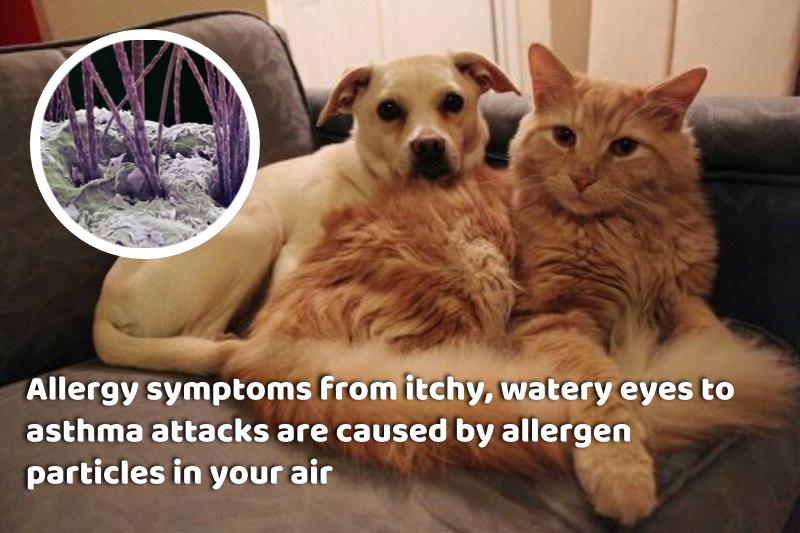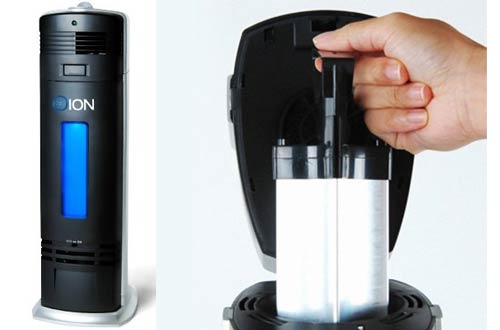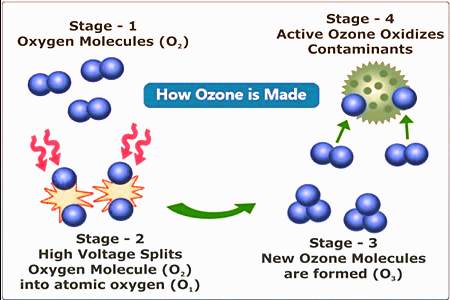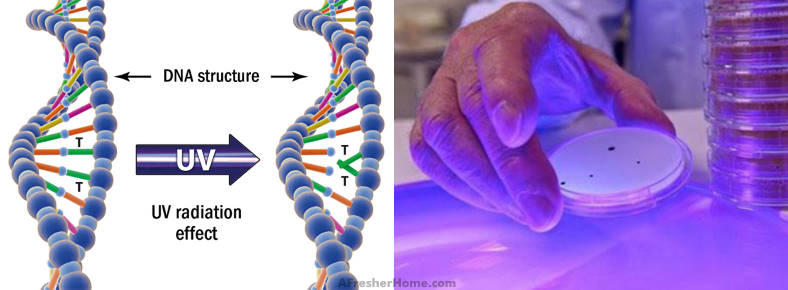Your home is your safe haven and should be a place that feels great to come home to. But did you know it can harbor some harmful gases and pollutants?
According to the Environmental Protection Agency (EPA), indoor air contains organic chemical pollutants at levels 2 to 5 times higher than those found in outdoor air. Knowing that maybe it’s time to invest in a good air purifier.
But wait – are air purifiers good for your health? Or could they be potentially harmful as well? And which ones are the right kinds to buy?
Contents
Answering the basic question – Are air purifiers good for your health?
First off, before going into more detail, here’s a quick answer to your question:
Ultimately, it comes down to this: Yes, the right type of air purifier is good for your health. The wrong type can cause health issues or discomfort.
- HEPA filter-based air purifiers produce no harmful by-products and are good for your health. They remove harmful and allergy-causing particulates from the air, leaving only fresh air behind.
- Ozone generators are a poor choice and are potentially harmful. Additionally, they’re very ineffective for air cleaning when compared to HEPA type air purifiers.
- Ionizers are generally a good way to effectively combat airborne germs that cause illnesses. However, like others, they’re not efficient or effective for the most common air quality problems. Again, a filter-type based purifier is a much better choice.
I’d like to explain exactly why this is – and what kind of purifier you should – or should not – buy.
Some are simply junk and a waste of money. In fact, some can make you cough, feel poorly, and are not good for your health!
Common home air quality problems
Indoor pollution is best dealt with by eliminating the pollutants and ventilating your home. Some of us can open windows and let fresh air in for a while, but the problem is that’s a temporary solution – it won’t fix the source of the problem.
While there are too many to list here, some of the most common problems are:
- Allergens from plants and other materials
- Pet odors, hair, and pet dander
- Bad smells from a variety of sources
- Sneezing, coughing, and sniffling
- Irritants causing red eyes or scratchy skin
- Dust mite problems
- Stale air that doesn’t smell fresh
- Dust
- Volatile organic compound (VOC) substances from chemicals
Unlike temporary solutions, an air purifier can remove air contaminants, pet dander, dust mite irritants, dust, smoke odors, and much more. Some of the most common problems we all suffer from can improve a lot!
Ultimately, the only way to truly deal with an air quality problem is to get rid of the source! If that’s not possible (for example, getting rid of your pets) the solution is to remove the cause as it’s produced.
To do so, however, you’ll want the right kind of product that won’t expose you to potential health symptoms. You’ll also want something that’s effective, too. Otherwise, what’s the point?
Air quality problems air purifiers can help with
Shown: My air purifier’s filter after being used only about 2 weeks and capturing LOTS of dust. I was amazed at how much it removed from my room and the air around me!
There are two kinds of indoor pollutants commonly found in homes:
1. Particulate matter: Pollen, dust, debris, hair, pet dander, smoke, molds, bacteria, viruses, and other tiny organisms. Newer homes may contain airborne particles related to new carpet or building materials indoors.
Sometimes matter is brought in from outdoors. A great example is smokers who bring smoker particles inside your home on their clothes & hair, or dirt and plant particles from other places.
2. Gaseous pollutants: The usual household sources, including ingredients in fuels, medicine, perfume, cosmetics, plastics, and other products used for things like cleaning, cooking, or maintenance. Others include smoke or pet odors also.
How does an air purifier work?
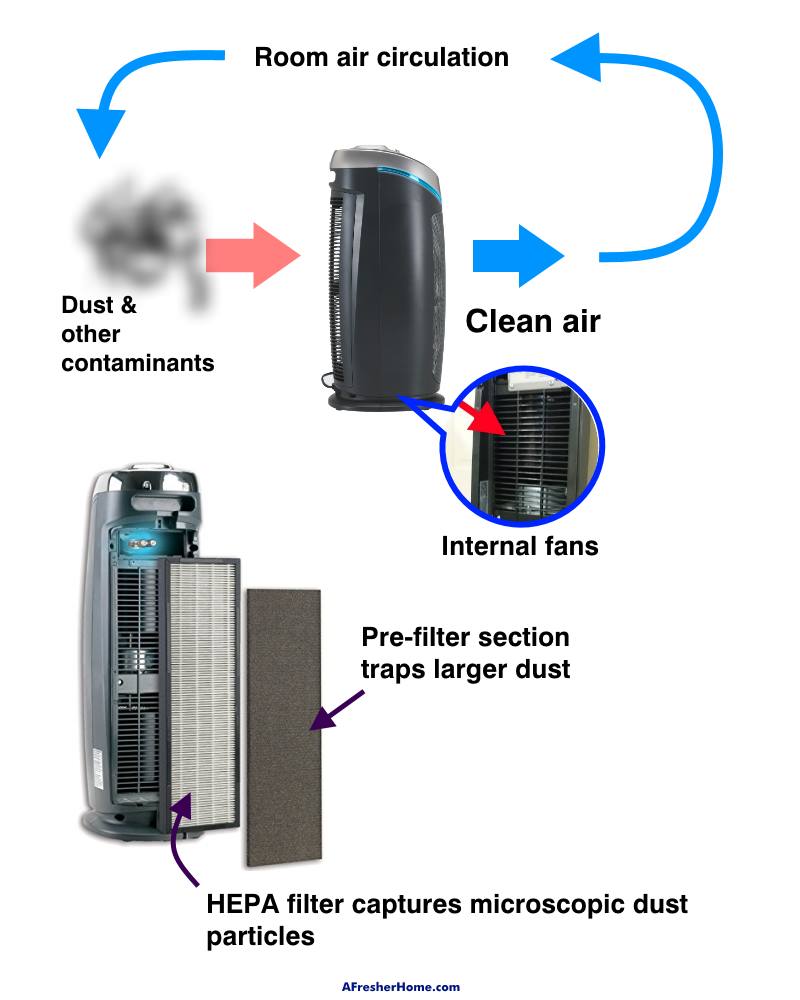
An air purifier is an electromechanical device that cleans indoor air either by removing or destroying the pollutants. Most use a fan to pull dirty air from an enclosed space (your bedroom, kitchen, or living room, for instance) and force the air through a filter or series of filters, trapping unwanted contaminants.
The clean air is then released back into the room. This continues and is a process of continuously cycling air over and over until the room is purified.
Since each group of pollutants has different characteristics, the air purifying system that will work for each of them will also differ.
Some systems work by removing pollutants by one of 3 ways:
- Mechanical filtration – applicable for particulate matter
- Electrostatic attraction – applicable for particulate matter
- Gas absorption – applicable for some gas pollutants
Other systems work by destroying pollutants and work as follows:
- Ultraviolet (UV) light radiation – applicable for molds, viruses, bacteria, and other biological pollutants
- Photocatalytic oxidation (PCO) – also uses ultraviolet lamps and is intended for gaseous pollutants
- Ozone generation – produces ozone molecules (O3) from surrounding oxygen to trap particulates, gases, and biological pollutants
The different types of air purifiers
There’s a number of different types of air purifiers that you should know about, although not all are found in consumer products. Just the same, it’s very helpful to have an overall awareness of what’s out there.
Several of these aren’t something you’ll find when shopping for a product for your home, so don’t stress out about it.
1. HEPA filter purifiers
A HEPA filter is an extremely dense filter made up of many extremely dense fibers packed together. The material traps microscopic particles in the air passing through it. They’re highly effective at cleaning the air and don’t have any undesirable side effects unlike other methods used. Often a HEPA filter is used along with a pre-filter and an activated carbon filter.
The most commonly available type in the consumer market, these are air purifiers that capture particulates using filters. High-Efficiency Particulate Air (HEPA) filters fall under this category and are the standard type you’ll find when shopping.
A HEPA air filter is made of very thin glass fibers randomly woven into a mesh material which is folded to increase its surface area.
Extremely dense in construction, they’re capable of capturing and removing 99.97% of particulate matter as small as 0.3 microns in size (a micron is 1/1,000,000 of a meter).
While there are other types of filters used in some cases (such as HEPA “type”), they’re not as effective if they don’t meet the government specifications the HEPA filter standard requires.
Normally they’re used along with 1 or 2 more filter sections such as a mesh prefilter (for trapping dust, hair, and larger elements) and an odor and gas-absorbing section.
2. Electronic air cleaners
Electronic air cleaners like this B-1000 ionizer shown here work by generating charged particles. These particles then can cling to particulates in the air as well as neutralize germs, too. A well-designed unit collects the foreign matter in a filter (shown) or on a plate.
Electronic air cleaners draw air into an ionization section where particulates are electrically charged.
Electrostatic air precipitators and air ionizers are two examples of electronic air cleaners. In the case of precipitators, these charged particles are attracted to plates with an opposite electrical charge as they pass through in the air, removing them from the air.
Ionizers create the charged particles which bond to air particles and then metal collection plates or a filter inside the device.
Unlike air filters that are tested using HEPA standards, there’s no way to gauge the effectiveness of electronic air cleaners. They also produce small amounts of ozone – a three-oxygen molecule which can irritate the lungs – as a by-product.
Why ionizers are a bad choice
Ionizers have been proven to rid the air effectively of sickness-causing microbes, so they can offer a great benefit if designed correctly.
Despite this, they can’t purify the air nearly as effectively as filter-based purifiers can. If you’re considering buying an ionizer purifier, it’s important to be aware that most aren’t really worth the money.
3. Ozone generators
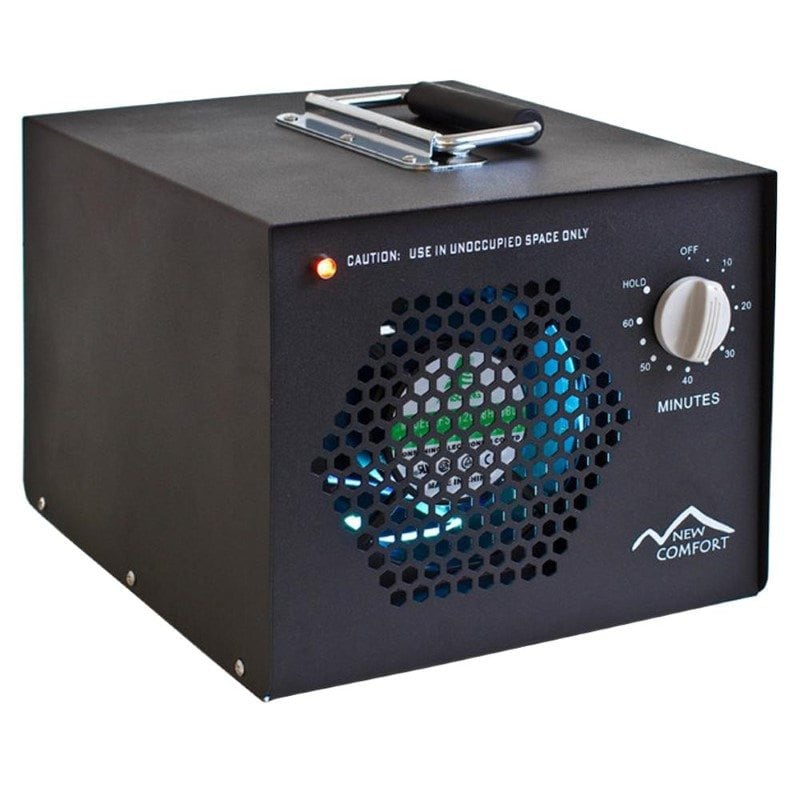
Ozone generators are a type of air cleaner designed to oxidize biological contaminants, odors, gaseous pollutants, allergens, and particulates. Ozone has to be used in high concentrations to be effective.
At first glance, it can seem like ozone is a great way to eliminate pollutants in the air without even needing a filter or even fans in some cases. Many sold today on the market are listed with big claims and fancy technical terms but in truth are very poor performers.
Unfortunately, ozone can exacerbate symptoms in asthma sufferers, cause shortness of breath and throat irritation, and even lower the body’s ability to ward off respiratory infections.
In fact, the EPA recognizes ozone as a lung irritant and products often have ratings to let you know how much they produce.
Sales gimmicks and your money
As I mentioned earlier, ozone generators are often sold with misleading advertisements to make consumers think they’re effective and will freshen the air well. The truth is, they really don’t!
Ozone itself can attach to airborne particles and trap it, but the problem is that it takes an excessive amount of ozone for them to be anywhere near effective. Therefore, they aren’t recommended for enclosed rooms and especially not for people with asthma or other respiratory problems.
Some air purifiers have an ionizer or ozone generator as an extra option. These types are less likely to produce unsafe levels as they’re a secondary feature and aren’t a health threat in most cases.
The most prevalent problem with ozone generators is that they can’t purify the air efficiently as a filter-based product can.
4. Ultraviolet (UV) germicidal irradiation air cleaners
Ultraviolet light damages the DNA of airborne germs and microbes at the molecular level, rendering them harmless.
UV-based cleaners are intended for the destruction of molds, viruses, and bacteria either airborne or populating along the HVAC ductwork. These serve primarily to cleanse the air of germs and don’t remove particles and other foreign matter from the air as filters do.
However, many of these biological pollutants produce higher levels of UV radiation than is provided by most UVGI cleaners designed for home use. Dead or inactivate microorganisms can still trigger allergies and respiratory problems.
Also, there’s no way to tell how effective UV cleaners are since there aren’t any standards to test them or compare them when buying. In air purifiers available for home use, the UV feature is a side benefit for reducing airborne germs and microbes.


